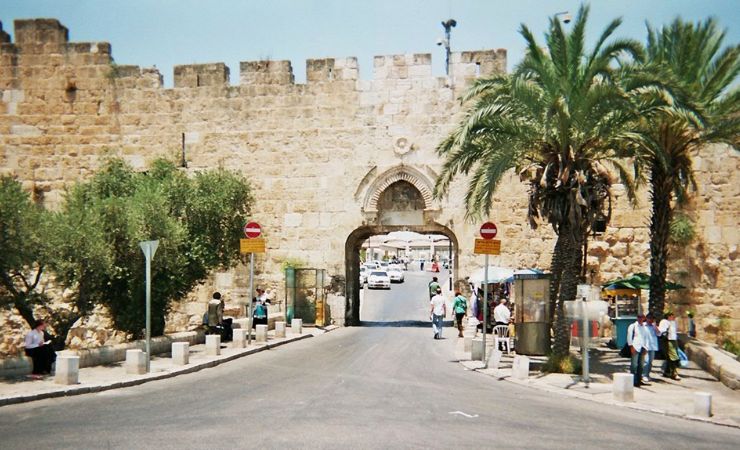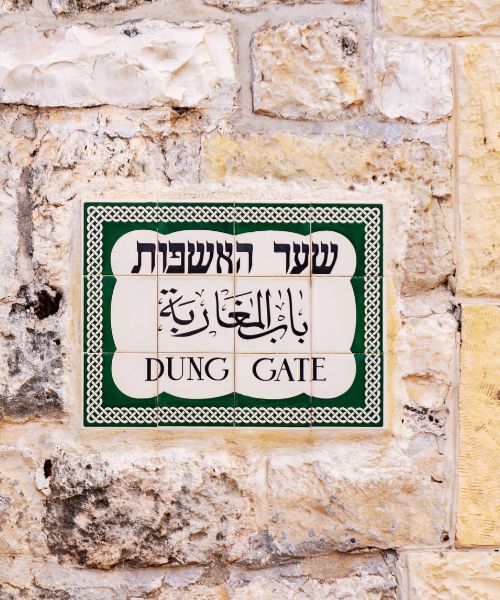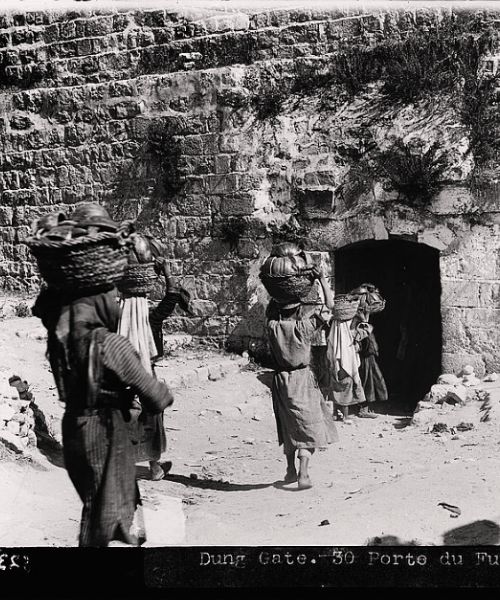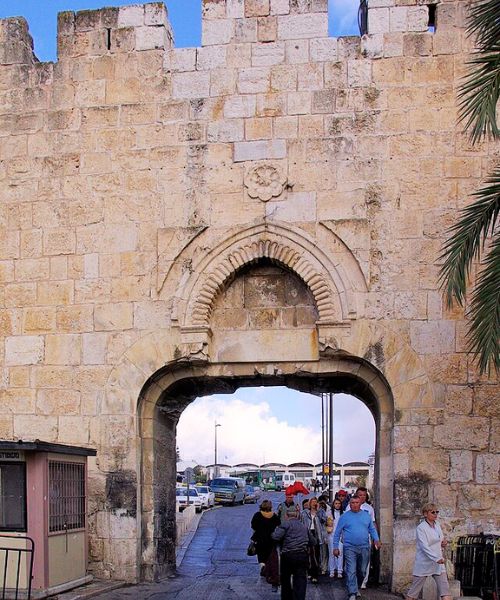The Dung Gate: A Gateway to Holiness
Introduction
The Dung Gate, also known as the Silwan Gate or the Mughrabi Gate, is one of the eight gates in the Old City of Jerusalem. It offers access to some of its most significant sites such as the Western Wall and the Al Aqsa mosque.
Location
The Dung Gate is situated near the southeast corner of the Old City of Jerusalem not far from the Jerusalem Archeological Park (Davidson Center). It is a main passage for vehicles exiting the Old City.

Credit: fr:Utilisateur:Djampa, CC BY-SA 4.0, via Wikimedia Commons
A Dive into the History of the Dung Gate
The unusual moniker, the Dung Gate, or “Sha’ar Ha’ashpot” in Hebrew, stems from an interpretation of the Biblical term ‘Ashpot’, synonymous with ‘refuse’. Anecdotal evidence suggests that the gate was historically a conduit for the city’s waste, hence the name.
The original gate was built in the aftermath of the liberation of Jerusalem by Saladin in 1187, following the establishment of the Maghrebi Quarter. This neighborhood was home to North African Kutama Fatimids, renowned for their valor in fighting alongside Salah al-Din. The gate was rebuilt in 1313, during the Mamluk period.
The current gate was constructed as part of the new city walls erected under Suleiman the Magnificent and completed around 1541. Initially, the Dung Gate was a narrow opening of just 1.5 meters wide, topped by an arch, and designed only for pedestrians and pack animals to pass through. In 1952, the gate was widened by the Jordanian authorities to allow vehicular traffic. It was further enlarged in 1985 by the Israeli authorities to accommodate the increased traffic of pilgrims visiting the holy site.
The Dung Gate’s current design is a blend of the old and the new. The original stone arch and stone decoration were incorporated into a new design when the gate was enlarged in the 1980s. This new-old gate was created by architect Arthur Kutcher and landscape architect Shlomo Aronson, and supported by the Jerusalem Foundation. The modern gate is built of reinforced concrete but is clad in stone, preserving the style and spirit characteristic of the walls of the Old City of Jerusalem. The new design helps the old and new elements blend together without disturbing the general style of the city wall.



Sites Nearby the Dung Gate
Jerusalem Archaeological Park and Davidson Centre: Right after entering the Dung Gate, these sites offer a glimpse into the city’s past with ruins of walls from different periods of Jerusalem’s history.
City of David: This archaeological site is believed to be the original urban core of ancient Jerusalem. Visitors can explore ancient ruins and walk through Hezekiah’s Tunnel, a remarkable feat of engineering from the biblical era.
- Western Wall: Also known as the Wailing Wall, this is one of the most sacred sites in Judaism. It’s a place of prayer and pilgrimage sacred to the Jewish people.
Western Wall Tunnels: These tunnels reveal the full length of the Western Wall hidden beneath the Old City, offering a unique perspective on this significant religious site.
- Al-Aqsa Mosque: This is the third holiest site in Islam and is located on the Temple Mount.
- Pool of Siloam: An ancient pool where, according to the New Testament, Jesus healed a man who had been blind since birth.



